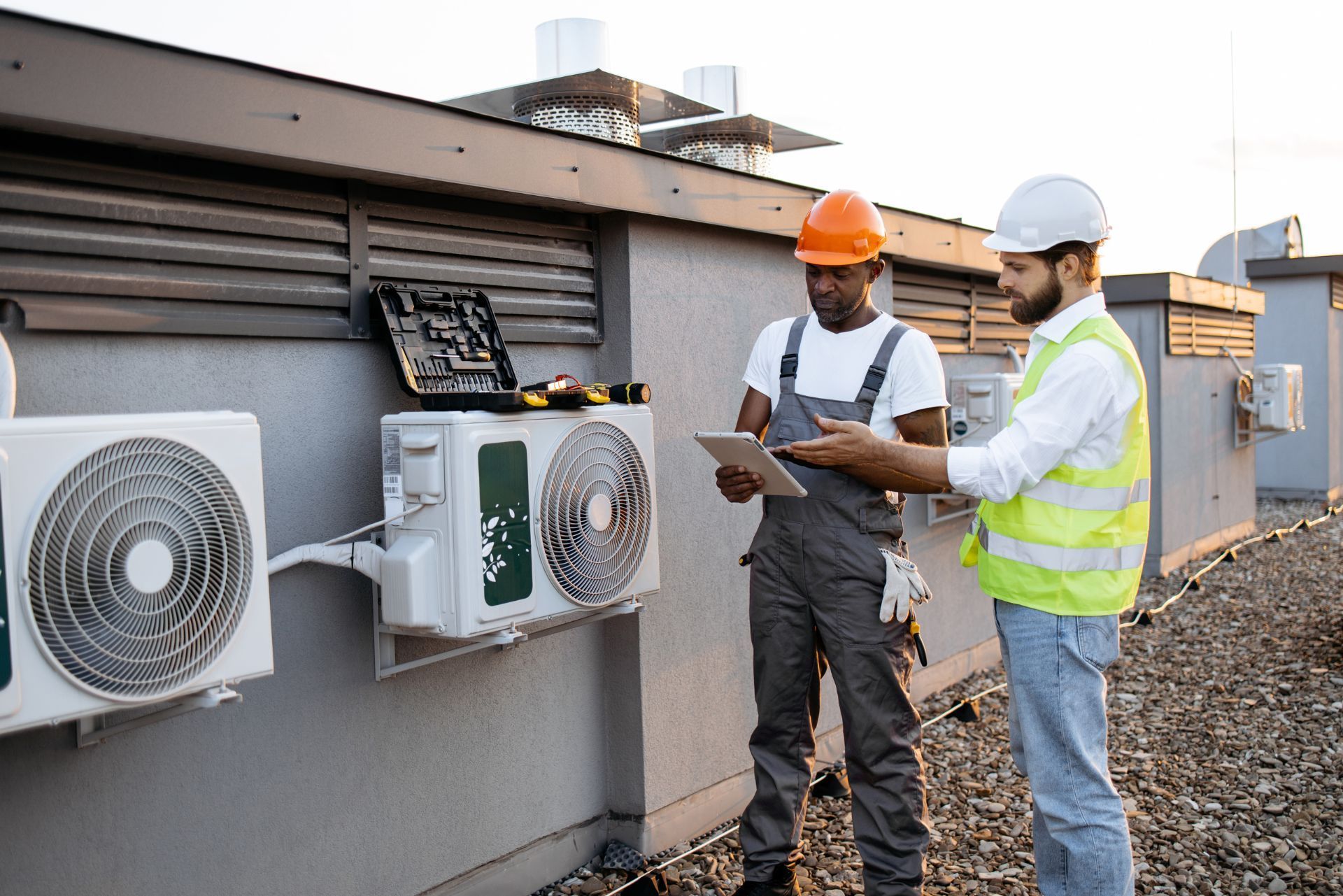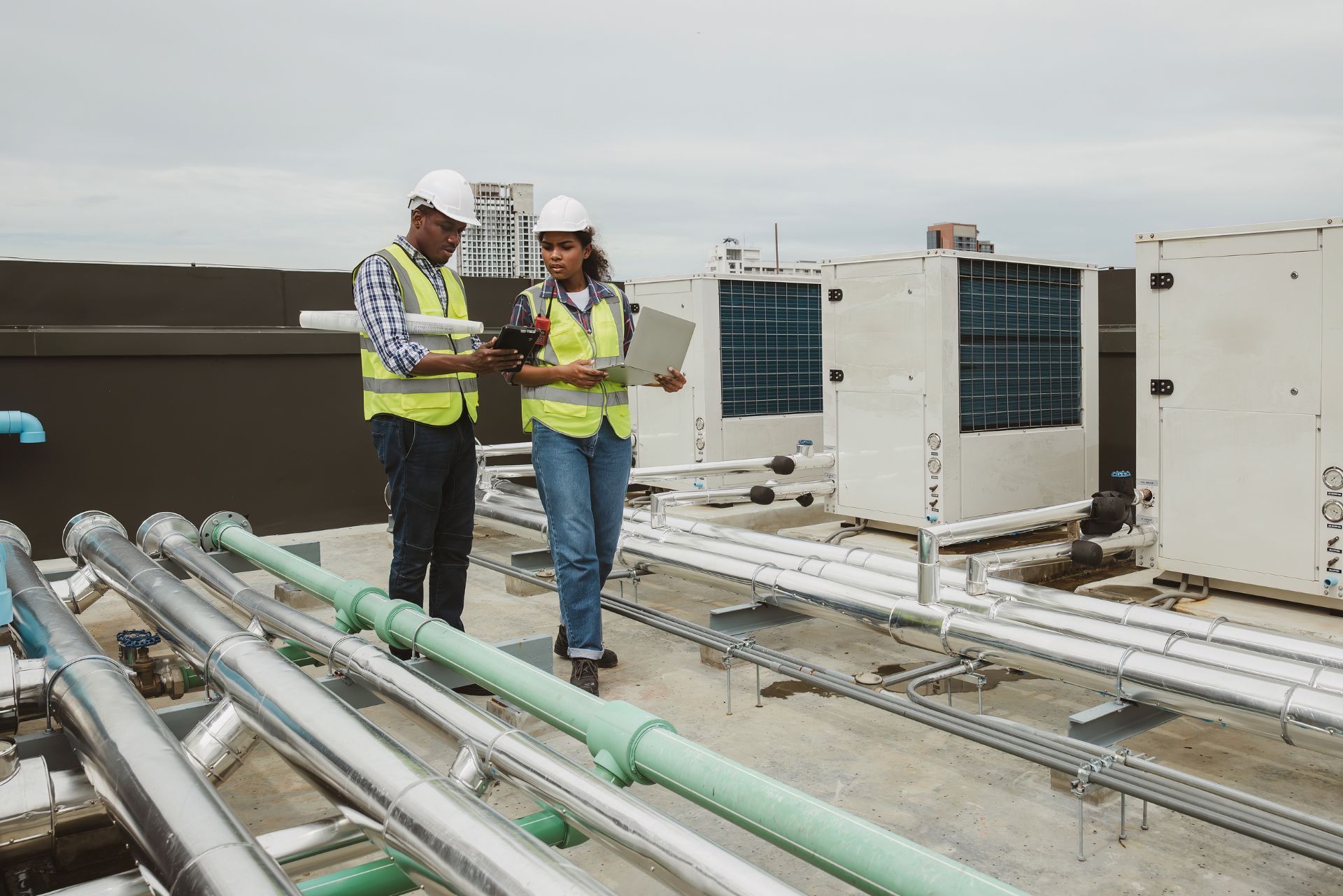Contractors Pollution Liability Insurance for HVAC Contractors
or call us: 888-862-1202
Top 3 Recommended Policies

In the HVAC industry, managing environmental risks is becoming increasingly important. Contractors Pollution Liability (CPL) Insurance is a specialized form of coverage designed to protect contractors from the financial consequences of pollution-related incidents that may arise during their work. For HVAC contractors, who often handle materials and equipment that can impact air quality and environmental safety, understanding CPL insurance is essential to safeguard their business and reputation.
Despite its importance, many contractors remain uninsured or underinsured against pollution liabilities. According to Burns & Wilcox, only about 10 percent of those who need environmental insurance actually have it, leaving a staggering 90 percent exposed to potential claims. This gap highlights the critical need for HVAC contractors to evaluate their exposure and consider appropriate coverage options.
What is Contractors Pollution Liability Insurance?
Contractors Pollution Liability Insurance is designed to cover third-party claims for bodily injury, property damage, and cleanup costs resulting from pollution conditions caused by a contractor’s operations. Unlike general liability insurance, which often excludes pollution-related claims, CPL insurance specifically addresses environmental risks that can arise during construction, renovation, or maintenance projects.
For HVAC contractors, pollution risks can stem from the handling of refrigerants, asbestos removal, mold remediation, or accidental releases of hazardous substances. CPL insurance provides coverage for incidents such as contamination of soil, water, or air, as well as legal defense costs associated with pollution claims.
The market for CPL insurance is evolving to better meet the needs of contractors. As Engineering News-Record reports, insurers have expanded coverage to include conditions like mold on an occurrence basis and pollution at the insured’s own locations, reflecting a more comprehensive approach to environmental risk management.
In addition to the evolving coverage options, many insurance providers are recognizing the importance of risk management practices in the underwriting process. Contractors who implement proactive measures, such as regular training for employees on handling hazardous materials and conducting thorough site assessments, may find themselves eligible for lower premiums. This not only incentivizes safer work environments but also fosters a culture of environmental responsibility within the industry.
Furthermore, the increasing awareness of environmental issues among the public and regulatory bodies has led to a heightened scrutiny of construction practices. Contractors are now faced with the dual challenge of meeting project deadlines while ensuring compliance with stricter environmental regulations. As a result, having robust CPL insurance not only protects contractors from potential financial losses but also enhances their reputation as responsible businesses committed to sustainable practices. This can ultimately lead to more opportunities and partnerships in an increasingly eco-conscious market.

Why HVAC Contractors Need Pollution Liability Insurance
HVAC contractors face unique environmental exposures that can lead to costly claims. The improper handling of refrigerants, for example, can result in the release of harmful chemicals that damage the environment and harm public health. Additionally, older buildings may contain asbestos or lead-based materials that require careful management during HVAC installation or repair. The presence of these hazardous materials not only complicates the installation process but also necessitates compliance with stringent regulations, which can vary significantly by location. Failure to adhere to these regulations can lead to severe penalties, further emphasizing the importance of pollution liability insurance.
Without adequate pollution liability coverage, contractors may be personally responsible for cleanup costs, legal fees, and damages resulting from pollution incidents. A notable case study highlighted by Engineering News-Record involved a contractor who unknowingly moved contaminated topsoil containing PCBs, leading to a cleanup bill exceeding $1 million. This example underscores the financial risks contractors face when pollution liabilities are not properly insured. Furthermore, the long-term implications of such incidents can tarnish a contractor's reputation, making it difficult to secure future projects, as clients often seek out those with proven records of safety and compliance.
Moreover, as Gina Jones, Vice President and Director of Environmental Programs at Burns & Wilcox, points out, many clients decline coverage because they believe it is unnecessary or too expensive. Yet, uninsured environmental claims have exceeded a billion dollars, proving that the cost of going without insurance can be far greater than the premiums paid. The misconception surrounding the necessity of pollution liability insurance can be attributed to a lack of awareness about the potential risks involved in HVAC work. In fact, many contractors may not realize that even minor incidents can escalate into major environmental concerns, leading to significant financial repercussions. As the industry evolves and regulations become more stringent, the demand for comprehensive pollution liability coverage is likely to increase, making it a critical component of any HVAC contractor's risk management strategy.
The CPL insurance market has seen significant changes aimed at better serving contractors’ needs. Insurers have broadened the definition of pollution to include emerging risks such as Legionella bacteria, medical wastes, and even low-level radioactive waste. This expansion means HVAC contractors can obtain coverage for a wider range of potential environmental hazards encountered on the job.
Steve Stabilito, underwriting director for construction professional and pollution lines at XL Catlin Inc., notes that the marketplace now covers contractors’ “cradle-to-grave pollution exposures,” providing protection throughout the lifecycle of a project. This comprehensive approach is particularly valuable for HVAC contractors who may be involved in multiple phases of construction or maintenance. By addressing risks that were previously overlooked, insurers are enabling contractors to operate with greater confidence, knowing they have a safety net in place for unforeseen environmental liabilities.
Additionally, pricing trends have shifted. According to Engineering News-Record, prices for CPL insurance have bottomed out, and policy terms have become more flexible. This means contractors can access better coverage at more competitive rates than in previous years. The increased competition among insurers is driving innovation in policy offerings, allowing contractors to tailor their coverage to specific project needs, which can be particularly beneficial in specialized sectors like green building or retrofitting older systems to meet modern environmental standards.
On average, environmental liability insurance costs about $223 per month, a figure that may be well worth the investment considering the potential financial exposure from pollution claims. Furthermore, as awareness of environmental issues continues to rise, more clients are demanding proof of adequate insurance coverage before awarding contracts. This trend not only underscores the importance of having robust CPL insurance but also highlights the evolving landscape where environmental responsibility is becoming a key factor in securing business opportunities. In this context, having comprehensive coverage can serve as a competitive advantage, positioning contractors as responsible and reliable partners in the eyes of clients and regulatory bodies alike.
Key Benefits of CPL Insurance for HVAC Contractors
Contractors Pollution Liability Insurance offers several critical benefits tailored to the needs of HVAC contractors:
- Financial Protection: Covers cleanup costs, third-party bodily injury, and property damage resulting from pollution incidents.
- Legal Defense Coverage: Pays for legal expenses associated with defending pollution claims, often outside the policy’s liability limits.
- Coverage for Emerging Risks: Includes endorsements for mold, Legionella, and other environmental hazards increasingly relevant to HVAC work.
- Peace of Mind: Helps contractors comply with contractual and regulatory requirements, reducing the risk of costly litigation or project delays.
By investing in CPL insurance, HVAC contractors demonstrate a commitment to responsible environmental stewardship and risk management, which can enhance their reputation with clients and regulators alike. Furthermore, this insurance can be a vital asset when bidding on larger projects, as many clients now require proof of pollution liability coverage before awarding contracts. This requirement not only protects the client but also positions the contractor as a professional who prioritizes safety and compliance, potentially leading to more business opportunities.
Additionally, the evolving landscape of environmental regulations means that HVAC contractors must stay informed and prepared for new challenges. With CPL insurance, contractors can navigate these complexities with greater assurance, knowing they have a safety net in place. This proactive approach not only safeguards their business but also contributes to a more sustainable industry, as contractors are more likely to implement best practices and innovative solutions that minimize environmental impact.

How to Choose the Right Pollution Liability Insurance
Selecting the appropriate CPL insurance policy requires careful consideration of the specific risks associated with HVAC contracting. Contractors should evaluate the scope of their operations, the types of materials handled, and the regulatory environment in which they work. For instance, contractors operating in urban areas may face different pollution risks compared to those in rural settings, where the environmental impact of their work can vary significantly. Understanding local regulations and compliance requirements is crucial, as these can influence the types of coverage needed and the potential liabilities that could arise from environmental incidents.
Working with an insurance broker or carrier experienced in environmental risks can help identify coverage gaps and tailor a policy that fits the contractor’s needs. It’s important to review policy terms closely, paying attention to exclusions, limits, and endorsements that address unique exposures such as mold or non-owned disposal sites. Additionally, contractors should consider the claims process and the insurer’s reputation for handling pollution-related claims, as this can significantly affect the overall experience during a crisis. Engaging in conversations with peers in the industry can also provide insights into which insurers are most responsive and reliable when it comes to pollution liability.
As insurers continue to innovate, contractors may find policies that include disaster-response expense coverage and broader definitions of pollution, providing enhanced protection at competitive prices. Some policies now offer proactive risk management services, such as environmental audits and training programs, which can help contractors mitigate potential risks before they escalate. Furthermore, emerging technologies in the insurance sector, such as data analytics and risk modeling, are enabling insurers to better assess risks and offer customized solutions, making it essential for contractors to stay informed about the latest developments in pollution liability insurance.
Conclusion: Protecting Your HVAC Business with CPL Insurance
Contractors Pollution Liability Insurance is a vital safeguard for HVAC contractors facing complex environmental risks. With only a small fraction of contractors currently insured against pollution liabilities, there is a significant opportunity to mitigate financial exposure and protect business continuity.
By understanding the evolving market, coverage options, and the specific risks inherent in HVAC work, contractors can make informed decisions to secure the right insurance. As the industry adapts to new environmental challenges, CPL insurance remains a cornerstone of responsible contracting practices.
For HVAC contractors seeking to learn more about pollution liability insurance and its benefits, resources such as
Burns & Wilcox’s insights provide valuable guidance on navigating this critical aspect of risk management.
Contact Us
